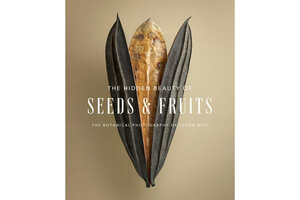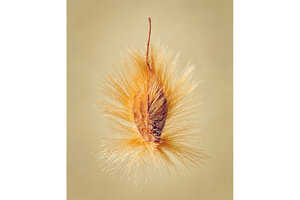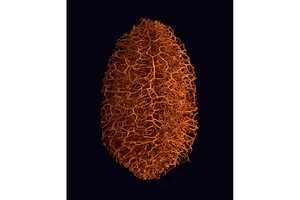Tiny seeds, magnified a thousandfold
Levon Biss, famous for his insect photographs, trains his lens on prized plant specimens from the collection of the Royal Botanic Garden Edinburgh.

"The Hidden Beauty of Seeds and Fruit" by Levon Biss, Harry N. Abrams, 144 pp.
Harry N. Abrams
Levon Biss’ photography is an elegant fusion of art and science. In his latest project, “The Hidden Beauty of Seeds & Fruits,” he uses a specialized process he calls microsculpture to reveal the secrets and mysteries of plants in exquisite detail. Each photograph is actually an amalgam of thousands of micro images, resulting in a sharper and more precise picture. Biss’ photography first gained widespread attention with an exhibition of luminescent insects, which originated at Oxford University Museum of Natural History in Oxford, England, in 2016 and has toured the world.
David Harris, a curator at the Royal Botanic Garden Edinburgh in Scotland, saw Biss’ splendid insect display and was captivated. It dawned on him that Biss’ singular, reverential view of nature might be tapped to document the organization’s herbarium plant species. An herbarium is an archive housing dried plant specimens, amassed over centuries from around the world. Edinburgh’s herbarium carpology – plant collection – is 3 million specimens strong and counting.
Initially, Harris wasn’t certain that Biss would see photographic potential in dried plants. They were not colorful like the insects. He needn’t have worried. What the plants lacked in vibrancy they more than made up for in shape and texture. Biss picked up the gauntlet, devoting six months of exacting labor to the project. As Harris writes in his introduction to the book, “[Biss] examined the collection with a remarkable intensity. It is this fascination that we hope to share.”
Readers of the book will find dozens of close-ups of the seed heads or fruits of various species, everything from the American big-leaf maple to China’s sweet gum. Each is accompanied by engaging lore.
Biss writes in the author’s note that the book “was a hugely rewarding project to create, and it has opened my eyes further to the ingenuity and diversity of nature.”


